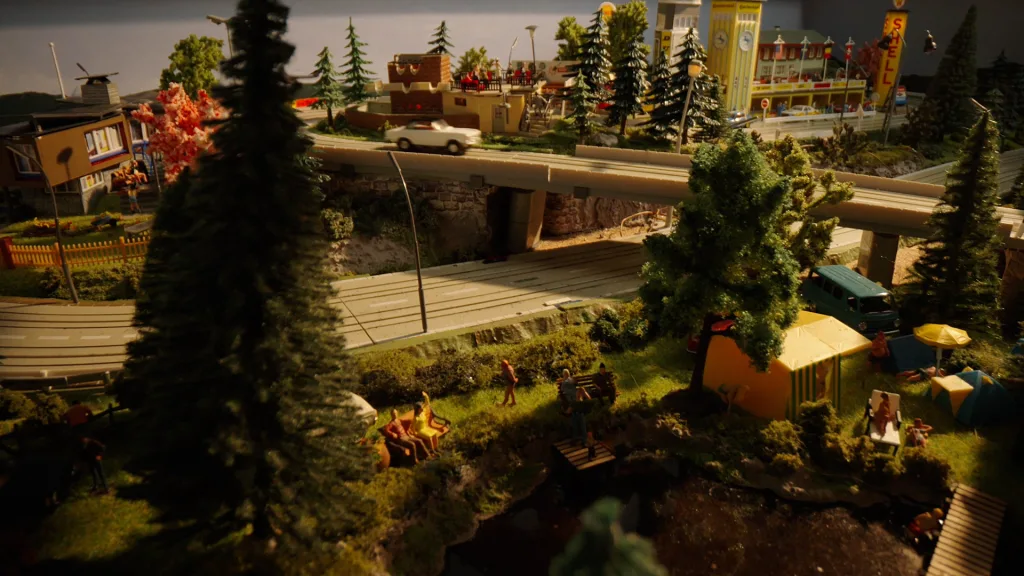
Movie: Daniel Gustafsson, Hallwyl museum/SHM.
A Little Wide World – Miniatures, Models and Dollhouses
Miniatures have long been exclusive items that inspire awe, and in modern times they have also come to serve as toys. Originally made from precious materials, today’s miniatures are more accessible thanks to the wider availability of materials. For many miniature creators, the true joy lies in the act of building —often using repurposed materials. Anything can be used if you just see the potential in it! Dollhouses can be made from old sugar crates and suitcases. Old champagne corks can become chairs. The playfulness in the craftsmanship is striking, and imagination knows no bounds.
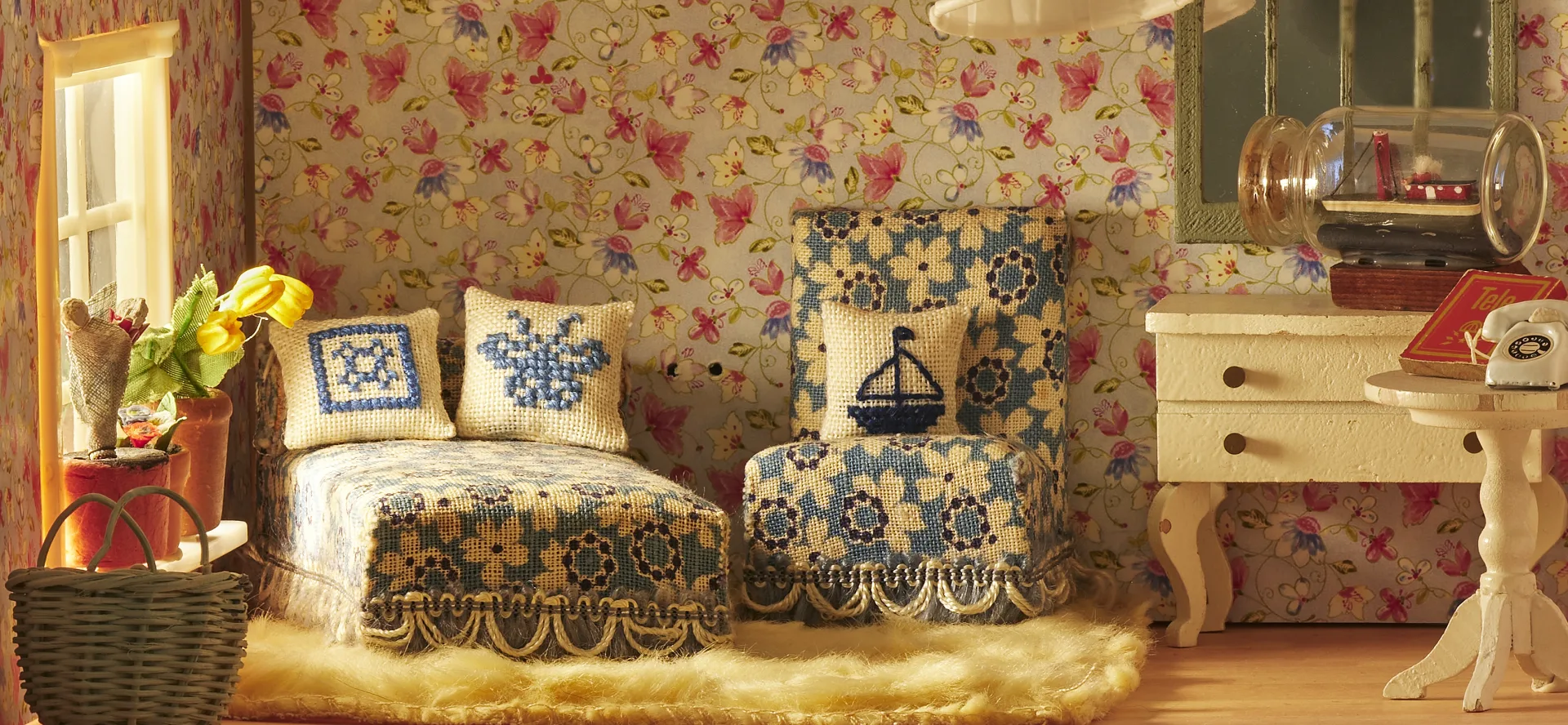
The von Hallwyl Family’s Doll’s House
Among the exhibition highlights are both antique and contemporary dollhouses. Wilhelmina von Hallwyl and her daughters used to play with these charming miniature rooms, two of which are on view in the exhibition. One is designed as a salon and another as a pavilion with matching furniture. These spaces feature tiled stoves, tablecloths, a chandelier, a bathtub, a spinning wheel, several dolls, and simple tables and chairs.
It wasn’t until the 19th century that miniatures became toys for children. With the Industrial Revolution, they could be produced on a larger scale and became more affordable. Still, dollhouses remained exclusive and desirable toys, mainly for the bourgeoisie and nobility. For those who preferred a more personal touch, building your own dollhouse was always an option. Mass production in Sweden and Denmark began in the 20th century. Several successful manufacturers emerged, including companies such as Lundby, Lerro, and Gemla, and the finely handcrafted dollhouses from Nolbyn in Värmland, Sweden. The exhibition also showcases the classic Lundby house, a dollhouse that has remained popular since the mid-20th century.
Creative Joy Among Miniature Artisans
One of the miniature artisans featured in the exhibition, Göril Larsson, has recreated the 2023 exhibition at the Hallwyl museum, Grand Dining at Hallwyl House That exhibition featured a lavish dining room setup reminiscent of the grand dinners hosted annually by the von Hallwyl family each February. With impressive precision, Göril Larsson has replicated the entire setting in miniature. Every folded napkin, menu, and piece of china is carefully recreated, right down to the spiral-turned chairs—all crafted entirely by hand. Living with a chronic illness, Göril finds peace and joy in the passionate craft of miniature-making.
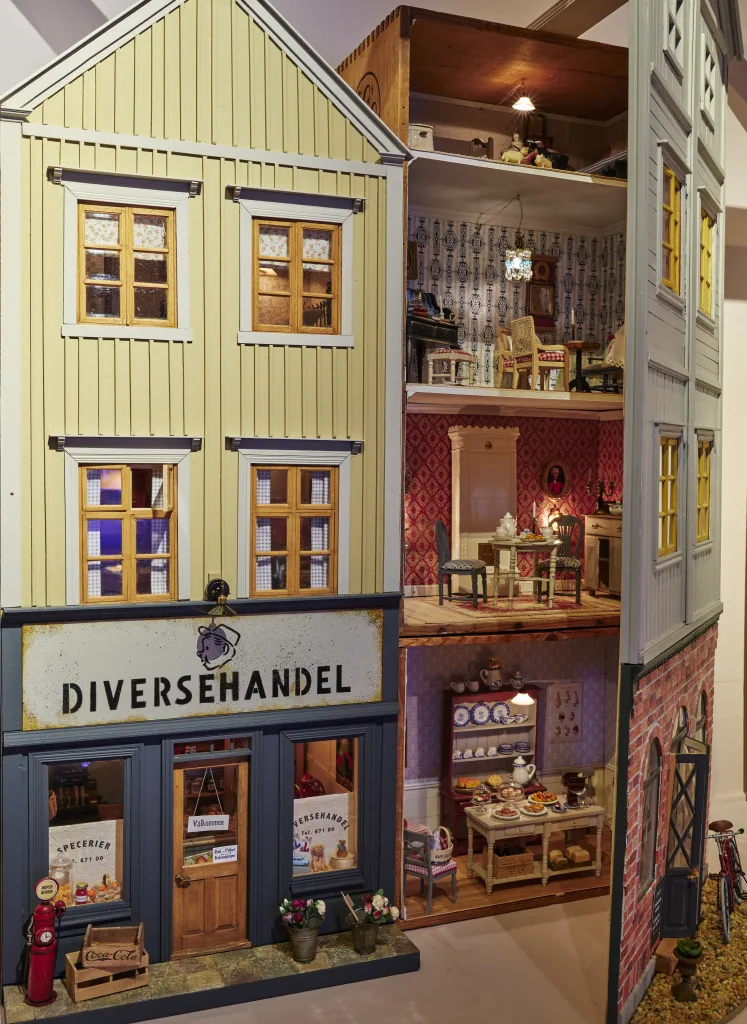
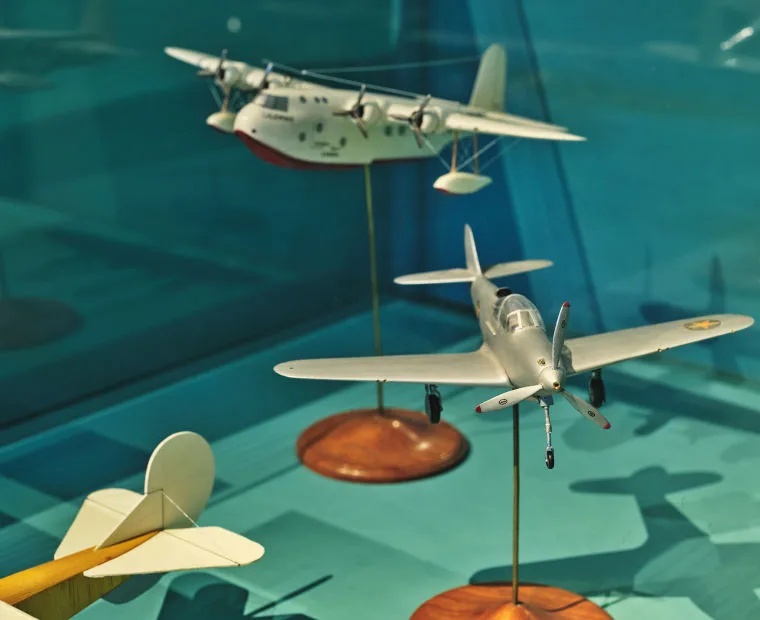
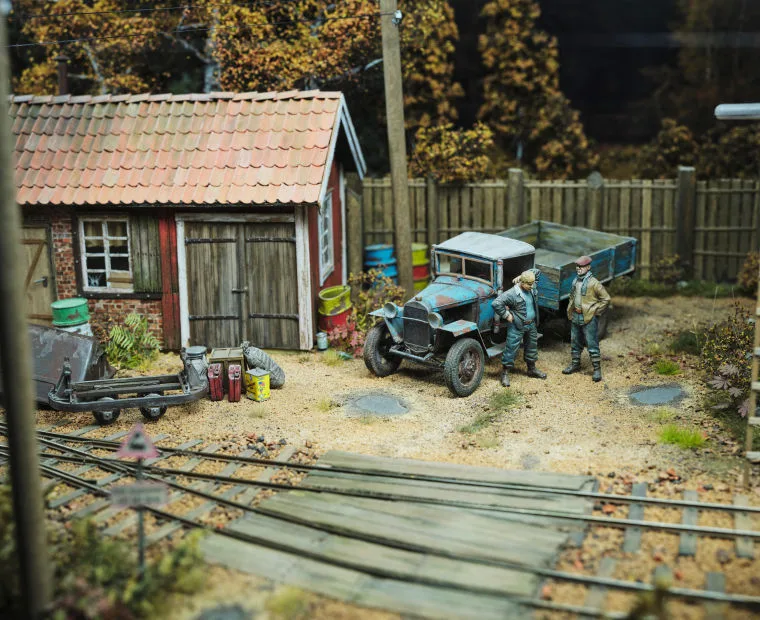
Photo: Ola Myrin, Hallwyl museum/SHM.
Miniature artisans can spend countless hours building tiny worlds, losing all sense of time and space in the process. Sometimes, the therapeutic aspect of creating is what matters most. In a world filled with overwhelming information and events beyond our control, creating miniature worlds can offer a sense of calm and the ability to shape one’s own universe, however small.
The exhibition also features model railways, ships-in-bottles, model airplanes, dioramas, and other forms of miniature craftsmanship. Thanks to contributions from around 40 contemporary miniature artisans and several dollhouse collectors, visitors will be amazed by the creativity and care behind every object on view.
Welcome to a wide little world of miniatures!
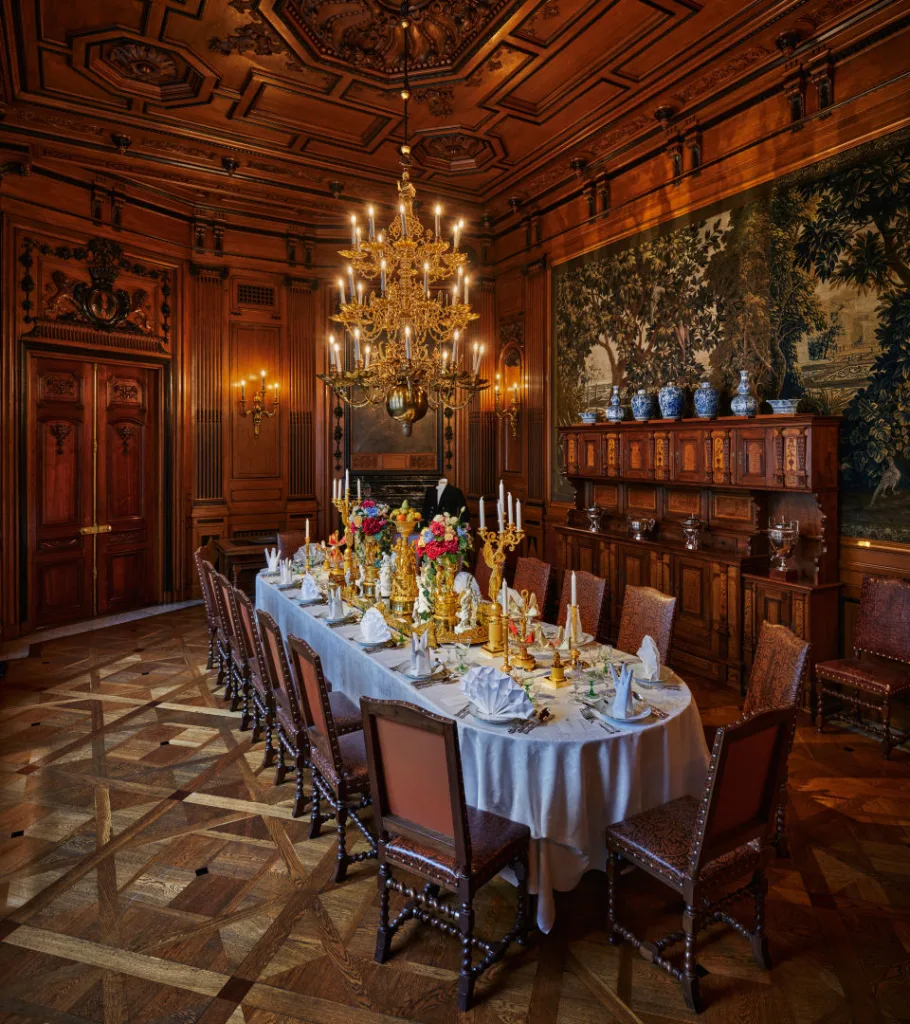
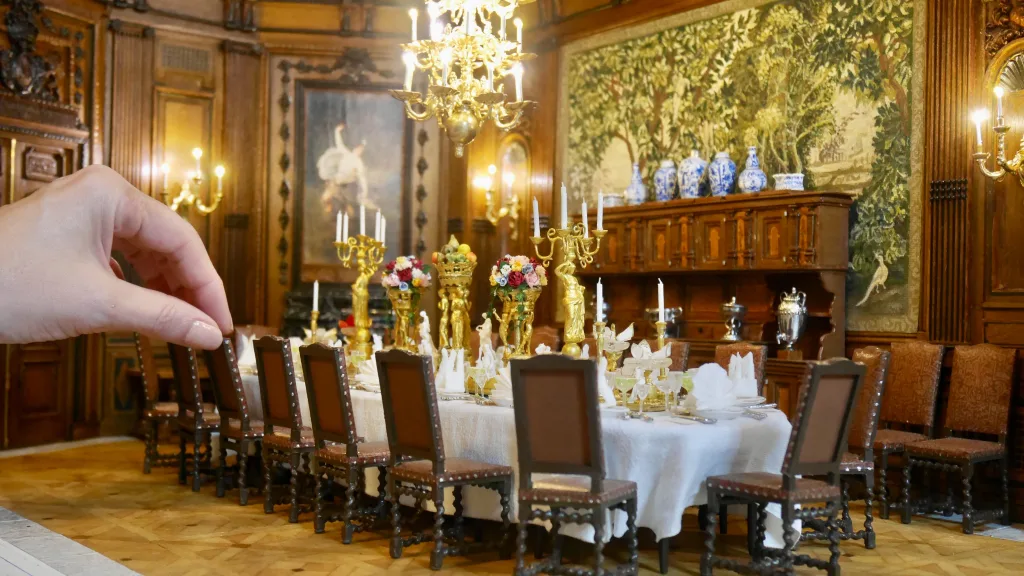
Left photo: Exhibition image from Grand Dining at Hallwyl House!, shown at the museum in 2023. Photographer: Ola Myrin. Right photo: Miniature creator Göril Larsson.
Visit the Exhibition
The exhibition is on display from Friday, May 9th, to Sunday, January 11th, 2026. The exhibition can be viewed independently during the museum's opening hours. Tickets are purchased on-site at the museum entrance.
Price and tickets
The exhibition is included in the museum admission ticket:
- Adult: 150 SEK (also applies to seniors and students)
- Children and young people up to 18 years: Free entry
Good to Know Before Your Visit
- Accessibility: To visit Building dreams, you need to go up stairs. There is no elevator in the museum.
- Wardrobe: Backpacks and outerwear is not allowed to bring in to the museum. Instead, backpacks and outerwear can be locked away for safekeeping in lockers that are adjacent to the entrance of the museum.
- Packed meal: Food and drink are not allowed in the museum. Hallwyl Restaurant is located in the courtyard of the museum and serves food.
- Strollers and prams: For evacuation reasons, it is not possible to bring a stroller/pram with you around the museum, however there are a few places for leaving strollers. The nearest place to lock prams is on Norrmalmstorg.
Accessibility
The Hallwyl Museum has five floors, but unfortunately no elevator. The only way to move around the museum is via stairs. The number of steps varies depending on where in the house you wish to go. If you choose to join a guided tour of the house, it involves climbing and descending at least 103 steps.